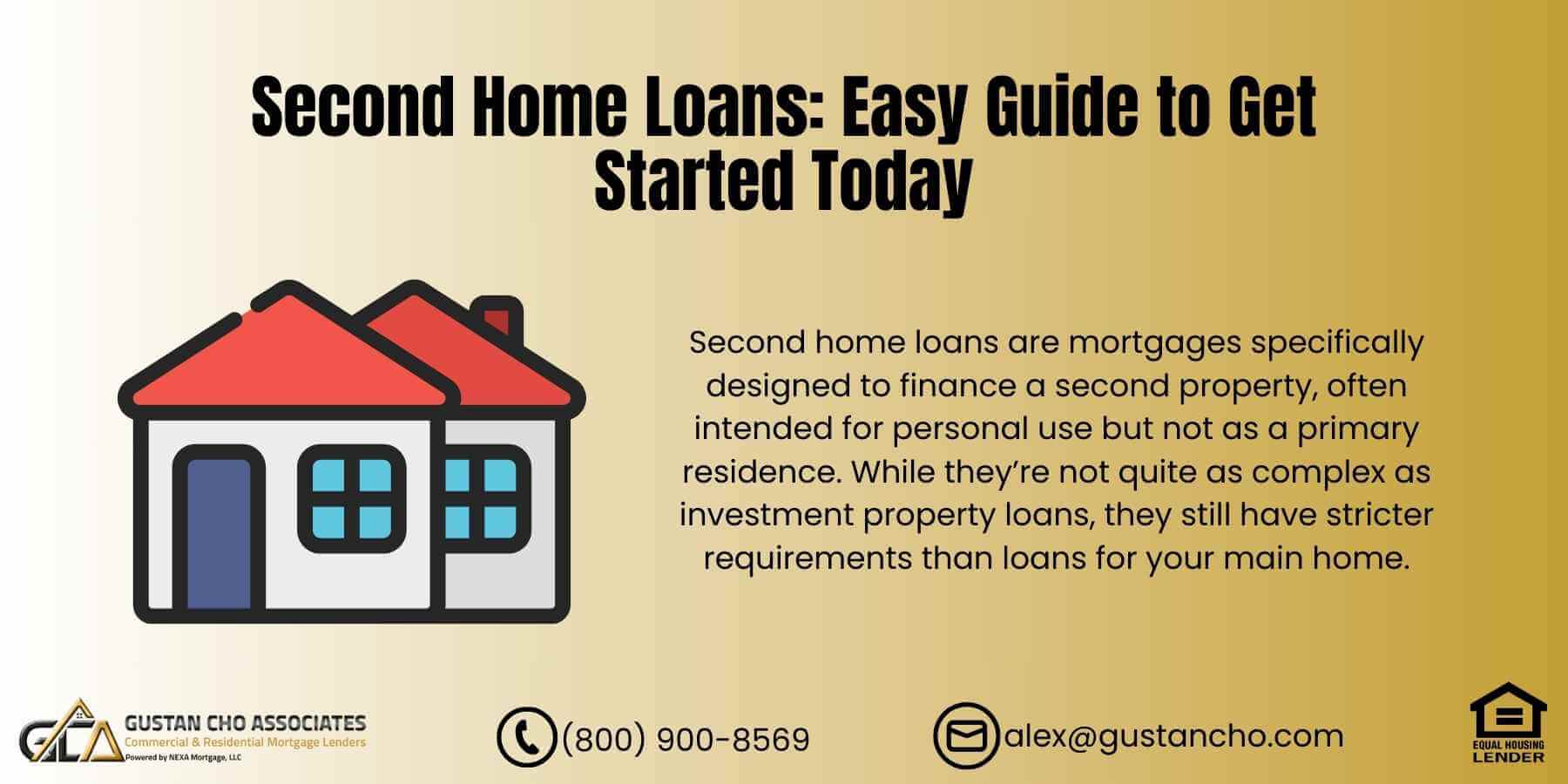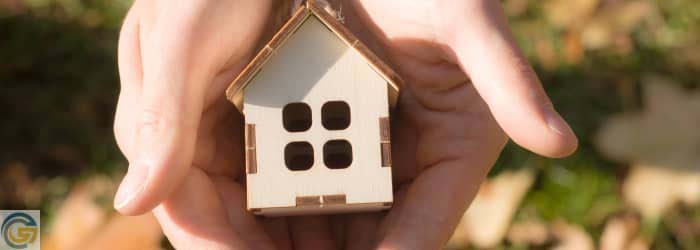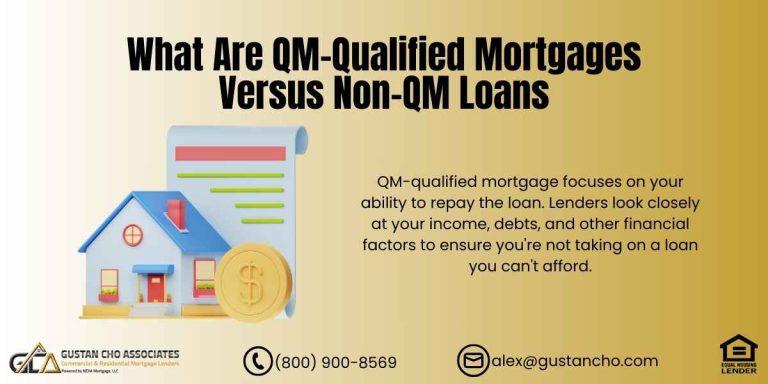Everything You Need to Know About Second Home Loans in 2024
Are you thinking of buying a second home? Maybe you want a cozy cabin by the lake, a beachside retreat, or a place closer to family. Second homes can be exciting investments and give you a getaway, but financing them differs slightly from getting a loan for your primary home. In this guide, we’ll break down everything you need to know about second home loans, including key updates for 2024 and what you’ll need to get approved.
What Are Second Home Loans?
Second home loans are mortgages specifically designed to finance a second property, often intended for personal use but not as a primary residence. While they’re not quite as complex as investment property loans, they still have stricter requirements than loans for your main home.
Why this matters: Lenders see second homes as riskier investments since they’re not where you live full-time. If times get tough, you’re more likely to let go of a second property than your primary home. That’s why guidelines and down payments can differ, and the terms aren’t always as flexible.
Ready to Buy a Second Home? Let’s Help You Secure Financing for Your Dream Property!
Contact us today to explore your second home loan options and get pre-approved for your new property.What Types of Loans Are Available for a Second Home?
You have several options for financing a second home, but there are specific choices that don’t work for second properties.
- Conventional Loans: These are the most frequently chosen options. Fannie Mae and Freddie Mac, two prominent government-sponsored enterprises (GSEs), support these loans and establish the criteria for financing second homes.
- Non-QM Loans: Non-QM (Non-Qualified Mortgage) loans are an option for individuals who do not satisfy conventional qualification criteria. With adaptable requirements, these loans can assist self-employed individuals or anyone with distinct financial circumstances.
- Bank Statement Loans are another option for those with non-traditional incomes, like self-employed borrowers, who may have difficulty meeting conventional income documentation requirements.
Note: Government-backed loans like FHA, VA, and USDA are strictly for primary residences, so they’re not available for second homes.
2024 Updates: What’s New for Second Home Loans?
If you’ve looked into second home loans before, you’ll want to be aware of these key updates for 2024:
- Increased Down Payment Requirement: The minimum down payment for conventional second home loans has risen to 10% (previously 5%). This change is aimed at reducing risk for lenders.
- Higher Interest Rates: Expect slightly higher rates on second home loans in 2024. Lenders are adjusting for market conditions, and rates are usually a bit above primary home rates to account for additional risk.
- Debt-to-Income Ratios (DTI): Maximum debt-to-income (DTI) ratios are strict. Generally, Fannie Mae and Freddie Mac set this limit at 45% or lower for second homes. However, this may change slightly based on factors like credit score and down payment size.
Second Home Loans vs. Investment Property Loans
It’s easy to mix up second homes and investment properties, but they have different purposes and requirements.
- Second Home: This is a property you intend to use personally, like a vacation home. It’s typically located some distance from your primary home (often 60 miles or more), and you don’t plan to rent it out full-time.
- Investment Property: If you plan to rent out the property regularly or use it as a source of income, it’s considered an investment property. These loans usually have stricter terms and higher interest rates than second home loans.
Pro Tip: If you’re buying a property within 60 miles of your primary residence, lenders may classify it as an investment property. Speak with a mortgage professional to help clarify which loan type best suits your goals.
Key Requirements for Second Home Loans in 2024
Lenders will look closely at your financial profile to qualify for a second home loan. Here’s what they expect:
1. Credit Score
- A higher credit score is generally required. Aim for at least a 620 for most conventional second home loans. Remember that a higher credit score typically leads to more favorable interest rates and terms.
2. Down Payment
- In 2024, a minimum 10% down payment is required, reflecting the increased risk associated with second homes. A bigger down payment can also help secure a lower interest rate.
3. Debt-to-Income Ratio (DTI)
- The ideal DTI for a second home loan is 45% or less. This ratio reflects the segment of your monthly earnings dedicated to repaying debts. Lowering your DTI before submitting your application can improve its chances of approval.
4. Documentation
- Like primary mortgages, you must provide proof of income, employment verification, credit history, and asset documentation. A bank statement loan could be more suitable for self-employed individuals since it is based on bank deposits instead of conventional pay stubs.
Tip: Use a debt calculator to determine your DTI and gather all required documents before applying to streamline the approval process.
Can You Rent Out Your Second Home?
The flexibility of renting out a second home depends on Fannie Mae and Freddie Mac guidelines:
- Personal Use Requirement: You must use the property personally for some portion of the year.
- Rental Restrictions: You can rent the home for a short time (like Airbnb) as long as it’s not part of a compulsory rental arrangement, such as a rental pool. Rental agreements shouldn’t hand over control to a third party or management company.
This setup allows you to offset some costs by renting but ensures that the property remains primarily for personal use.
How Are Interest Rates Different for Second Homes?
Second homes typically carry higher interest rates than primary residences. Here’s why:
- Higher Risk: Lenders view second homes as higher risk due to their part-time occupancy, making them vulnerable to issues like vandalism or weather damage.
- Rate Variability: Rates may vary based on credit score, down payment size, and loan terms. You can expect rates for second homes to be around 0.5% to 1% higher than primary home loans.
Did You Know? Making a larger down payment can sometimes reduce your interest rate by demonstrating financial stability to lenders.
The Mortgage Process for Second Home Loans
Getting a second home loan is similar to a primary home mortgage, with a few differences due to stricter requirements.
- Pre-Qualification and Pre-Approval: Before beginning the house hunting process, it is essential to get pre-qualified or pre-approved for a mortgage. This approach provides a clear understanding of your borrowing capacity and helps you estimate your monthly payments.
- Loan Application: Submit a mortgage application with required documents, such as income verification, tax returns, and credit reports.
- Appraisal: Lenders require an appraisal to check the property’s value and ensure it meets the criteria for a second home.
- Underwriting: The underwriter will review your entire financial profile, including income, credit, DTI, and property details. Due to the property’s non-primary status, underwriters are typically more cautious about second homes.
- Closing: Once the loan is approved, you’ll close on the loan, sign documents, and take possession of your second home!
Tip: Start your application early, especially if you’re considering a property in a high-demand area. The underwriting process for second homes can sometimes take longer than primary residences.
Looking to Buy a Second Home? We Offer Great Financing Options Just for You!
Reach out now to find out how we can help you secure a loan for your second home purchase.Ready to Make a Second Home Purchase?
Buying a second home is a major financial decision but has exciting benefits. By understanding second home loan requirements and 2024 updates, you’re better prepared to realize your second property dreams.
For a customized approach, connect with one of our mortgage experts today! We can guide you through the entire process, answer any questions, and help you find the best financing option to suit your goals.
Reach out to us at 800-900-8569 or send us a text for a quicker reply. Together, we can make your dreams of a second home come true!
Frequently Asked Questions About Second Home Loans:
Q: What Qualifies as a Second Home Under Fannie Mae and Freddie Mac Guidelines?
A: A second home must be a single-unit property suitable for year-round occupancy, located reasonably far from your primary residence, and intended for personal use. It cannot be under a mandatory rental arrangement or timeshare setup.
Q: Can I Rent Out My Second Home?
A: Yes, but there are rules. You must occupy the property for part of the year, and any rentals should be flexible without management control over occupancy.
Q: How Does My Credit Score Affect Second Home Loans?
A: A stronger credit score can help secure better rates and terms. For second homes, aim for a score above 620, though a score in the high 700s is ideal for favorable interest rates.
Q: Are There Special Down Payment Requirements for Second Homes?
A: Yes. The minimum down payment is 10%, but putting down more can improve your loan terms.
Q: What DTI is Required for a Second Home Loan?
A: Fannie Mae and Freddie Mac typically favor a DTI below 45%. Lowering your debt before applying can make your application stronger.
Q: What are the Benefits of Owning a Second Home?
A: A second home offers a personal getaway, potential rental income, and possibly increased property value over time. It can also be a step toward building family memories in a new setting.
Q: How do Second Home Loans Affect My Taxes?
A: Mortgage interest on a second home may be tax-deductible if you itemize deductions, just like your primary residence. However, deductions can be more complex if you rent the property for part of the year. Consult a tax professional to understand the best approach for your tax situation.
Q: What Happens if I Sell My Primary Home? Does the Second Home Become My Primary Residence?
A: If you move into your second home full-time, it can be designated as your primary residence. This may affect your mortgage terms, property taxes, and insurance. Notify your lender of this change; they may need to adjust your loan documentation accordingly.
Q: Can I Refinance My Second Home Loan?
A: Absolutely! Refinancing your second home loan is a great way to lower your interest rate, reduce monthly payments, or tap into equity. Refinancing terms for a second home may differ slightly from primary residence loans, often with slightly higher rates.
Q: How Does Home Insurance Differ for Second Homes?
A: Home insurance on a second home may be more expensive than your primary residence due to the higher risk of damage when the home is unoccupied. Some insurance companies offer special policies for second homes or vacation properties, which may cover occasional rentals or extended vacancies.
This blog about the waiting period after foreclosure requirements for borrowers on title but not on mortgage was updated on October 25th, 2024.










